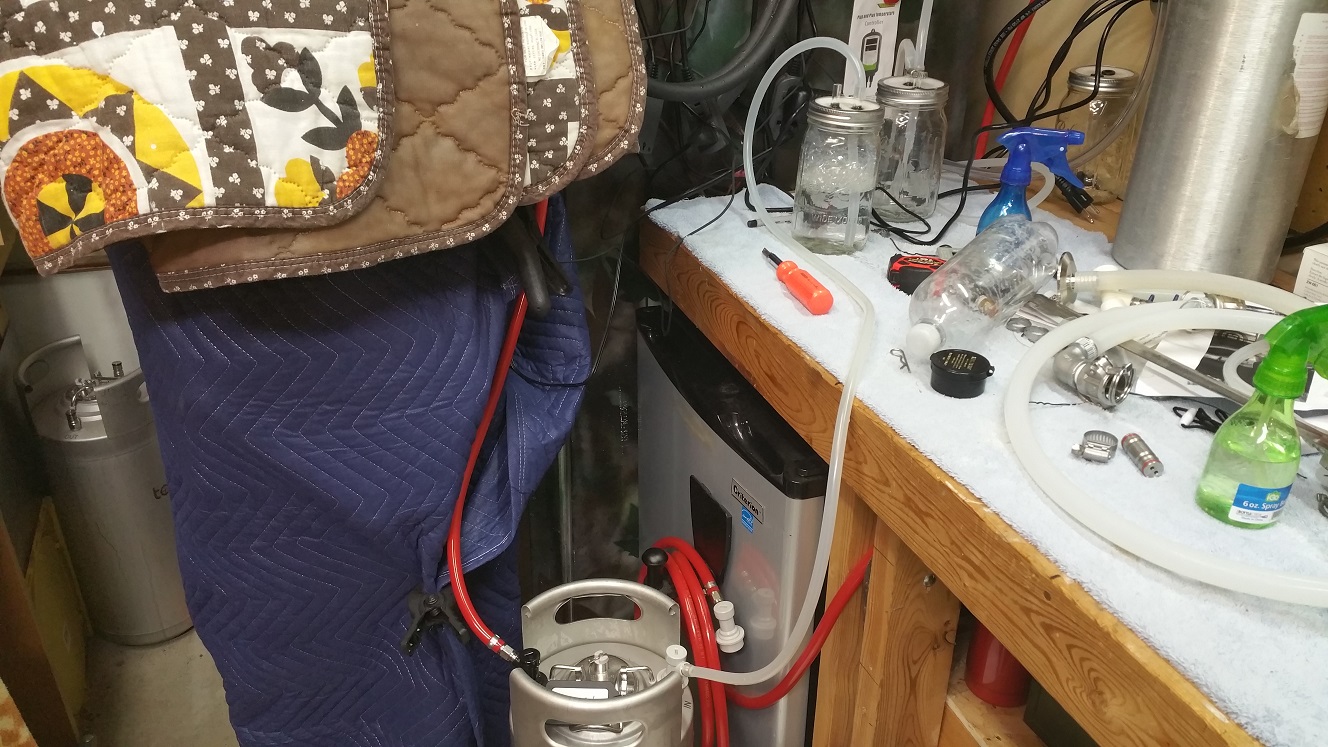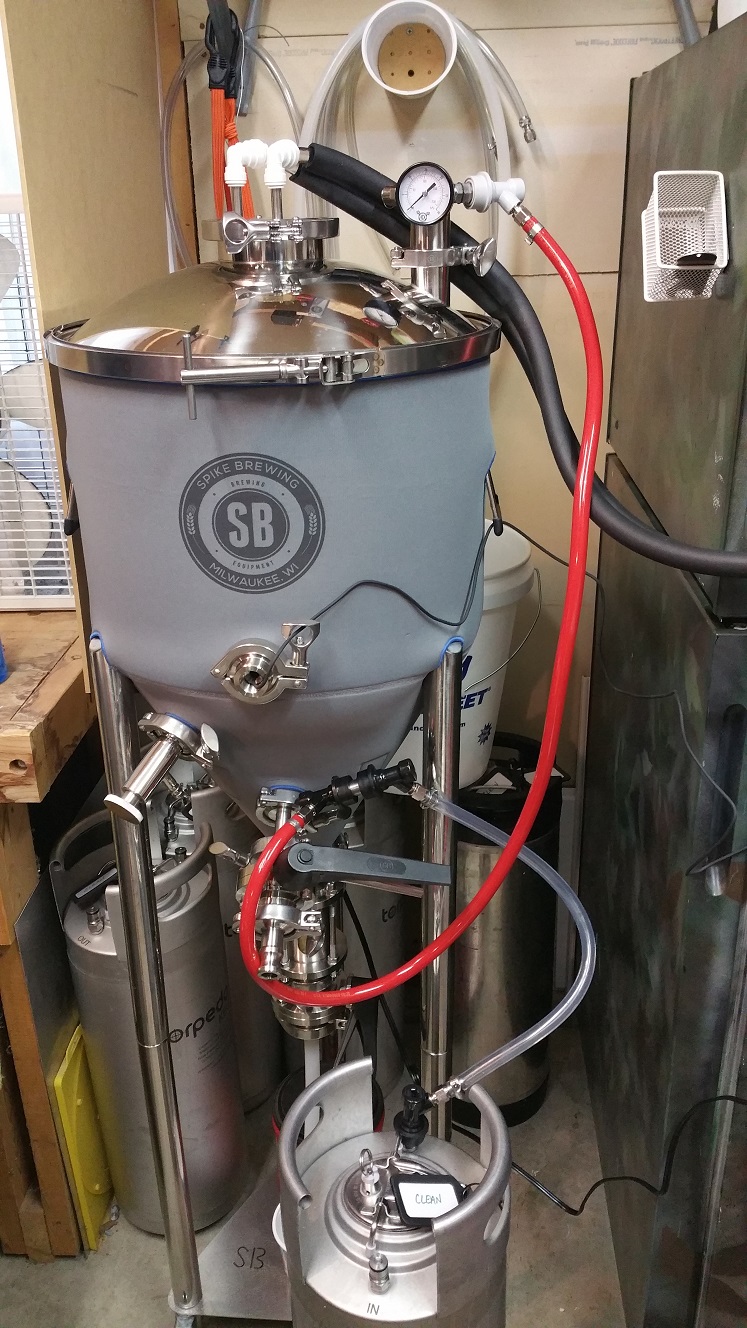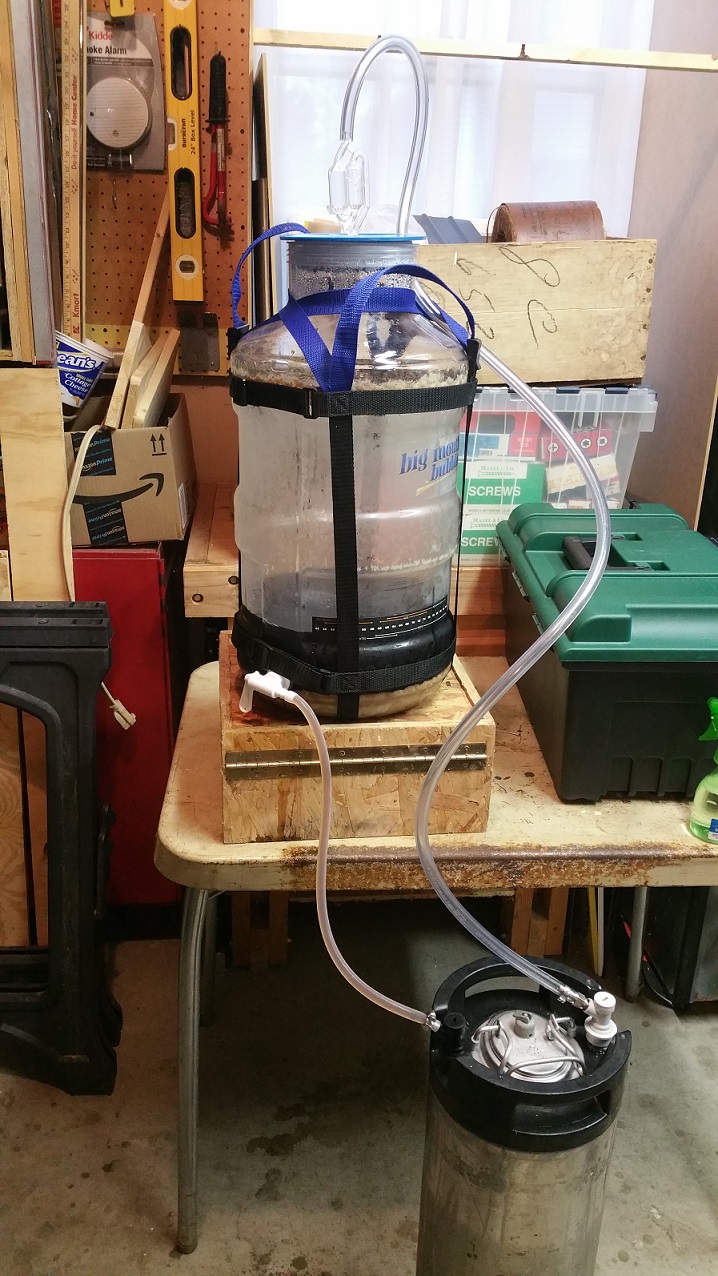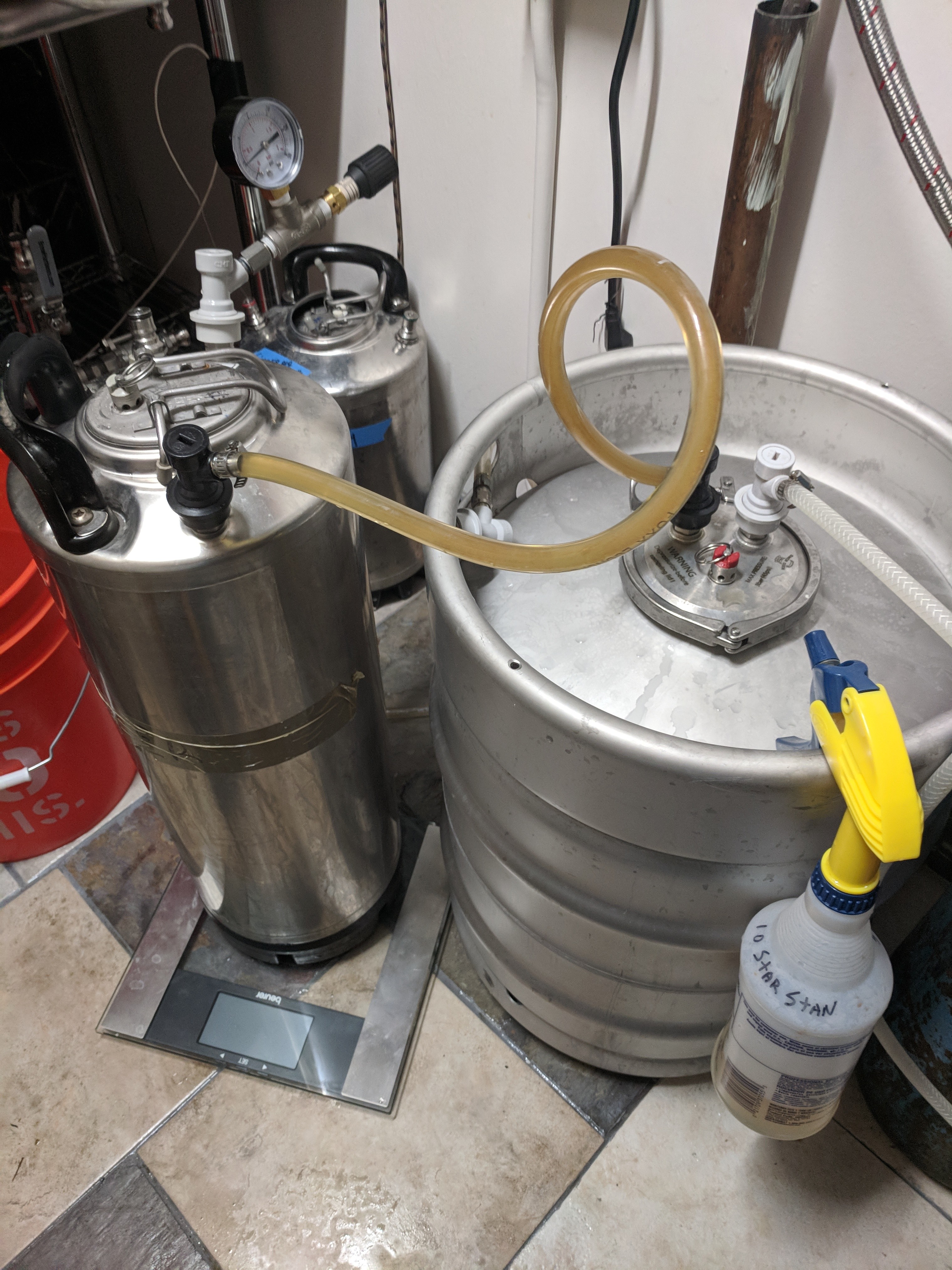Sorry if this has been asked and answered, I couldn't think up with a search phrase that came up with answers.
I am planning out my upgrade to kegging and would like to include closed transfers in that plan.
I ferment in a SS Brewtech Brew Bucket and use Norcal's CO2 Harvester (original version currently but considering the lid with ball lock and PRV).
My plan (hopefully this works) is to rig up a sanitized keg between the two jars to capture pure CO2 from fermentation to purge the keg. The first jar would catch any blow off and let the CO2 flow into the keg. Then air from the keg would be pushed out into the second jar which would act as an airlock. In this setup I'd have sanitizer in the second jar rather than having it start in the first and pushed to the second.
What I was then wondering was when I was ready to transfer could I hook up a line from the Brew Bucket to the Liquid Out on the keg and have the Gas In hooked to the first jar creating a closed loop. Would this setup allow beer to flow when opening the Brew Bucket valve, pushing the CO2 from the keg out into the jar and ultimately the fermenter or would it fail to drain similar to when you try to prime a pump with the tubing attached to the receiving vessel?
Thanks, Keith
I am planning out my upgrade to kegging and would like to include closed transfers in that plan.
I ferment in a SS Brewtech Brew Bucket and use Norcal's CO2 Harvester (original version currently but considering the lid with ball lock and PRV).
My plan (hopefully this works) is to rig up a sanitized keg between the two jars to capture pure CO2 from fermentation to purge the keg. The first jar would catch any blow off and let the CO2 flow into the keg. Then air from the keg would be pushed out into the second jar which would act as an airlock. In this setup I'd have sanitizer in the second jar rather than having it start in the first and pushed to the second.
What I was then wondering was when I was ready to transfer could I hook up a line from the Brew Bucket to the Liquid Out on the keg and have the Gas In hooked to the first jar creating a closed loop. Would this setup allow beer to flow when opening the Brew Bucket valve, pushing the CO2 from the keg out into the jar and ultimately the fermenter or would it fail to drain similar to when you try to prime a pump with the tubing attached to the receiving vessel?
Thanks, Keith




































![Craft A Brew - Safale S-04 Dry Yeast - Fermentis - English Ale Dry Yeast - For English and American Ales and Hard Apple Ciders - Ingredients for Home Brewing - Beer Making Supplies - [1 Pack]](https://m.media-amazon.com/images/I/41fVGNh6JfL._SL500_.jpg)























